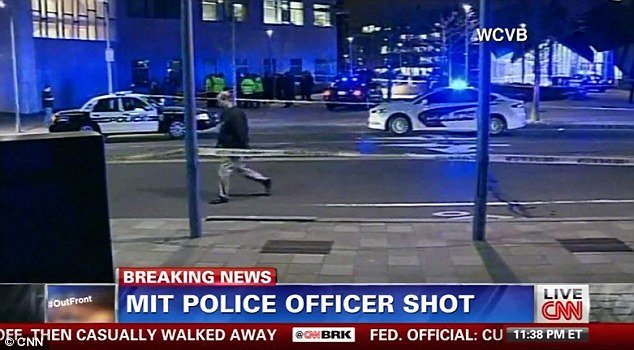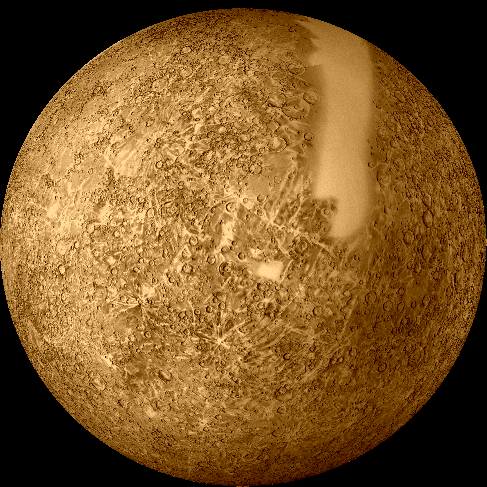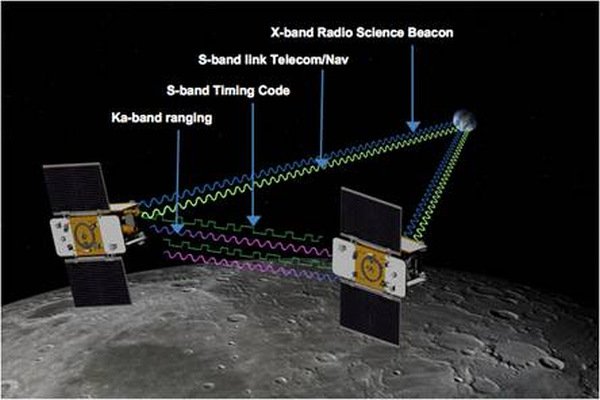Home Tags Posts tagged with "massachusetts institute of technology mit"
massachusetts institute of technology mit
Massachusetts Institute of Technology tops the world’s top 20 universities, according to the new QS World University rankings.
Harvard University comes second and UK’s University of Cambridge is in third position.
University College London (UCL) and Imperial occupied fourth and fifth places, with Oxford in sixth.
Universities in the United States made up the rest of the top 10.
Top 20 universities:
1. Massachusetts Institute of Technology (MIT)
2. Harvard University
3. University of Cambridge
4. University College London (UCL)
5. Imperial College London

Massachusetts Institute of Technology tops QS World University Rankings in 2013
6. University of Oxford
7. Stanford University
8. Yale University
9. University of Chicago
10=. California Institute of Technology (Caltech)
10=. Princeton University
12. Eth Zurich (Swiss Federal Institute of Technology)
13. University of Pennsylvania
14. Columbia University
15. Cornell University
16. Johns Hopkins University
17=. University of Edinburgh
17=. University of Toronto
19=. Ecole Polytechnique Fédérale de Lausanne
19=. King’s College London
[youtube KW3B-WKAmkc]
Boston suburbs Cambridge police and the Middlesex District Attorney’s office confirmed a MIT campus police officer was shot dead responding to a report of a disturbance when he was fired upon multiple times.
Initially, the officer was taken to Massachusetts General Hospital with life threatening injuries but he later died. His name was not immediately released.
State police spokesman Dave Procopio says the shooting took place about 10:30 p.m. outside a Massachusetts Institute of Technology (MIT) building.
Dave Procopio says authorities are searching for a suspect or suspects. No arrests have been made.
MIT police, Cambridge police and state police are involved in the investigation.

Cambridge police and the Middlesex District Attorney’s office confirmed a MIT campus police officer was shot dead responding to a report of a disturbance when he was fired upon multiple times
About 11,000 people attend the prestigious school.
The campus website said police were sweeping the campus and urged people to stay indoors.
In a statement issued to the press, law enforcement officials said that no arrests have been made in the shooting and the search for a suspect or suspects is ongoing.
MIT in Boston issued an emergency alert at 10.48 p.m. on Thursday night reporting that shots had been fired putting an officer was down and that a shooter was on the run.
It has been reported that a “Hispanic looking man” took the officer’s weapon from him before firing on him.
MIT posted this alert to their website: “At 10:48 PM today gunshots were reported near Building 32 (Stata) which is currently surrounded by responding agencies.
“The area is cordoned off. Please stay clear of area until further notice. Unknown if injuries have occurred. Although the situation is considered active and extremely dangerous, an investigation is underway.
“Updates will be provided at this site when more information becomes available.”
MIT campus newspaper The Tech posted to Twitter: “Shots fired near 32 Vassar St (Stata Center), police officer down. Please stay inside.”
The school is describing the situation as “active and extremely dangerous” – and FBI agents have been witnessed at the scene.
Boston has been on edge after two bombs ripped through the crowd near the finish line of the Boston Marathon, killing three people and injured 183 more.
[youtube Y1gieIHQJ6s]
The president of the Massachusetts Institute of Technology (MIT) has asked for an internal investigation into its role in Aaron Swartz’s prosecution.
Web activist and developer Aaron Swartz, who killed himself on Friday, was facing hacking charges in the US.
Aaron Swartz was accused of illegally downloading research documents from academic service JSTOR, using MIT networks.
If found guilty, he could have faced up to 35 years in prison following his trial, scheduled to start next month.
He could also have had to pay a fine of more than $1 million for downloading material from the subscription-only research archive.
Aaron Swartz had intended to plead not guilty to charges of computer fraud and wire fraud.
His family issued a statement stating the actions of both MIT and the Massachusetts US Attorney’s office had contributed to his death.
“Aaron’s death is not simply a personal tragedy. It is the product of a criminal justice system rife with intimidation and prosecutorial overreach,” they said.

The president of the MIT has asked for an internal investigation into its role in Aaron Swartz’s prosecution
When Aaron Swartz was charged, Massachusetts US Attorney Carmen Ortiz had said: “Stealing is stealing whether you use a computer command or a crowbar, and whether you take documents, data or dollars.”
On Monday, MIT president L Rafael Reif praised the “brilliant creativity and idealism” of Aaron Swartz, 26, who had been an early developer of the Reddit community.
“It pains me to think that MIT played any role in a series of events that have ended in tragedy,” he said in a statement to staff.
“Now is a time for everyone involved to reflect on their actions, and that includes all of us at MIT.”
He said he had asked his colleague, Prof. Hal Abelson, to analyze how MIT had behaved when it had first discovered “unusual activity” on its network in 2010, what decisions it had made and what its options had been at the time.
“I want to express very clearly that I and all of us at MIT are extremely saddened by the death of this promising young man who touched the lives of so many,” he said.
Many people have said that the penalties facing Aaron Swartz were unfair.
However, in a blog post, Orin Kerr, a professor of law at the George Washington University Law School, wrote the actions of the prosecutors had been “based on a fair reading of the law”.
“None of the charges involved aggressive readings of the law or any apparent prosecutorial overreach,” he said.
“All of the charges were based on established case law.”
Academics have since taken to Twitter to release their research free in tribute to Aaron Swartz, using the hashtag “PDFtribute”.
[youtube CIcCem_14xE]
NASA’s Messenger probe has found further tantalizing evidence for the existence of water ice at Mercury’s poles.
Though surface temperatures can soar above 400 C, some craters at Mercury’s poles are permanently in shadow, turning them into so-called cold traps.
Previous work has revealed patches near Mercury’s poles that strongly reflect radar – a characteristic of ice.
Now, the Messenger probe has shown that these “radar-bright” patches line up precisely with the shadowed craters.
Messenger is only the second spacecraft – after Mariner 10 in the 1970’s – to have visited the innermost planet. Until Messenger arrived, large swathes of Mercury’s surface had never been mapped.
The bright patches were detected by ground-based radio telescopes in the 1990s, but as co-author Dr. Nancy Chabot explained: “We’ve never had the imagery available before to see the surface where these radar-bright features are located.”
The researchers superimposed observations of radar bright patches by the Arecibo Observatory on the latest photos of Mercury’s poles taken by the MDIS imaging instrument aboard Messenger.
“MDIS images show that all the radar-bright features near Mercury’s south pole are located in areas of permanent shadow,” said Dr. Nancy Chabot, from Johns Hopkins University Applied Physics Laboratory (JHUAPL).
“Near Mercury’s north pole such deposits are also seen only in shadowed regions, results consistent with the water-ice hypothesis.”

NASA’s Messenger probe has found further tantalizing evidence for the existence of water ice at Mercury's poles
However, Dr. Nancy Chabot cautions, this does not constitute proof, and for many craters, icy deposits would need to be covered by a thin layer (10-20 cm) of insulating debris in order to remain stable.
Maria Zuber, from the Massachusetts Institute of Technology (MIT), who is a co-investigator on the Messenger mission, said: “The most interesting interpretation of [the radar observations] is that they were due to water ice.
“Sulphur had been proposed, there had also been some suggestion it was roughness – though there was no reason craters at the poles should be rougher than those at low latitudes.”
“The new data from Messenger… is strengthening the evidence that there is some sort of volatile there, and water-ice seems quite likely.”
Maria Zuber said information from several instruments on Messenger was currently being analyzed in order to answer the ice conundrum: “I think this is a question that we can come to a definitive answer on, as opposed to <<we think it may be this>>,” the MIT researcher explained.
On Wednesday, scientists from the Messenger mission published findings that Mercury had been geologically active for a long period in its history.
Data from the probe shows that impact craters on the planet’s surface were distorted by some geological process after they formed.
The findings, reported in Science magazine, challenge long-held views about the closest world to the Sun.
Scientists also presented a new model of Mercury’s internal structure, which suggests the planet’s huge inner core is encased in a shell of iron sulphide – a situation not seen on any other planet.
Messenger was launched in 2004, and entered orbit around its target in March last year. NASA recently announced that its mission would be extended until 2013.
NASA has succeeded in putting the first of twin gravity mapping satellites (Gravity Recovery and Internal Laboratories) in orbit around the Moon.
The Grail-A spacecraft fired its main engine late on Saturday (GMT) to slow itself sufficiently to take up an elliptical path around the lunar body.
The twin Grail-B, will attempt exactly the same maneuver on Sunday.
Together, the satellites will make measurements that are expected to give scientists remarkable new insights into the internal structure of the Moon.
This new data should clarify ideas about the Moon’s formation and resolve many questions, such as why its near and far sides look so different.
Lead scientist Dr. Maria Zuber from the Massachusetts Institute of Technology (MIT) is hoping for some dramatic discoveries.
“My resolution for the new year is to unlock lunar mysteries and understand how the Moon, Earth and other rocky planets evolved,” she said.
“Now, with Grail-A successfully placed in orbit around the Moon, we are one step closer to achieving that goal.”

NASA’s twin Grail satellites will make measurements that are expected to give scientists remarkable new insights into the internal structure of the Moon
The twin satellites were launched from Cape Canaveral, Florida, last September, and took a long spiral out to their destination.
This weekend’s approach to the Moon was designed to bring them in over the South Pole.
Grail-A, which is running ahead of its twin, initiated its orbit insertion manoeuvre at 21:21 GMT with a 40-minute burn on its 22-newton thruster.
Grail-B is programmed to make an almost identical burn on Sunday, starting at 22:05 GMT. NASA should have confirmation shortly before 23:00 GMT on New Year’s Day that both satellites are in the positions they should be.
“Following the lunar orbit insertion, the spacecraft will perform a series on intricate burns that take about two months, and these are required to get both spacecraft down to a [55km; 34-mile] altitude; and once that’s done, that’s when the science for Grail can begin,” explained David Lehman, the mission’s project manager at the Jet Propulsion Laboratory (JPL) in California.
Grail will map the small variations in gravity across the Moon.
These differences are the result of an uneven distribution of mass. Obvious examples at the Moon’s surface include big mountain ranges or deep impact basins, but even inside the lunar body the rock will be arranged in an irregular fashion, with some regions being denser than others.
All this will have a subtle influence on the pull of gravity sensed by over-flying spacecraft.
The Grail twins will make their measurements by carrying out a carefully calibrated pursuit of each other.
As the lead spacecraft flies through the uneven gravity field, it will experience small accelerations or decelerations. The second spacecraft, following some 100-200km behind, will detect these disturbances as very slight changes in the separation between the pair – deviations that are not much more than the width of a human red blood cell.
When the gravity map is combined with comparable-resolution topographical information showing the surface highs and lows, scientists should be able to deduce the Moon’s probable internal structure and composition. This is fundamental knowledge that will play into theories of how the lunar body formed and how it has evolved over time.
“We believe the Moon formed from the impact of a Mars-sized object into Earth, but we understand little really of how this happened and how the [lunar body] cooled off after the violent event,” said Dr. Maria Zuber. And she described as “shocking”, the continued inability of science to explain why the rugged far-side of the Moon looks so different from that of the nearside with its great swathe of dark volcanic plains, or marina.
“Given that we’ve sent so many missions that have studied the outside of the Moon, it seems that the answer is not on the surface. The answer is locked in the interior,” Dr. Maria Zuber said.
Grail’s mapping phase will last for 82 days until early June. The Moon then goes into shadow, into eclipse, behind the Earth.
If the satellites can survive the hours of darkness on their batteries, it is likely they will be tasked with a second mapping cycle in the second half of 2012.
This would be at a much reduced altitude, perhaps as low as 25 km from the surface. Getting lower would improve the resolution of the gravity maps yet again, and enable scientists to study even the structure of relatively small, shallow craters.
Grail is an acronym for Gravity Recovery and Internal Laboratory. The satellites will be given more engaging names than just “A” and “B” once the weekend’s orbit insertion is confirmed. The names are being chosen via a public competition.





